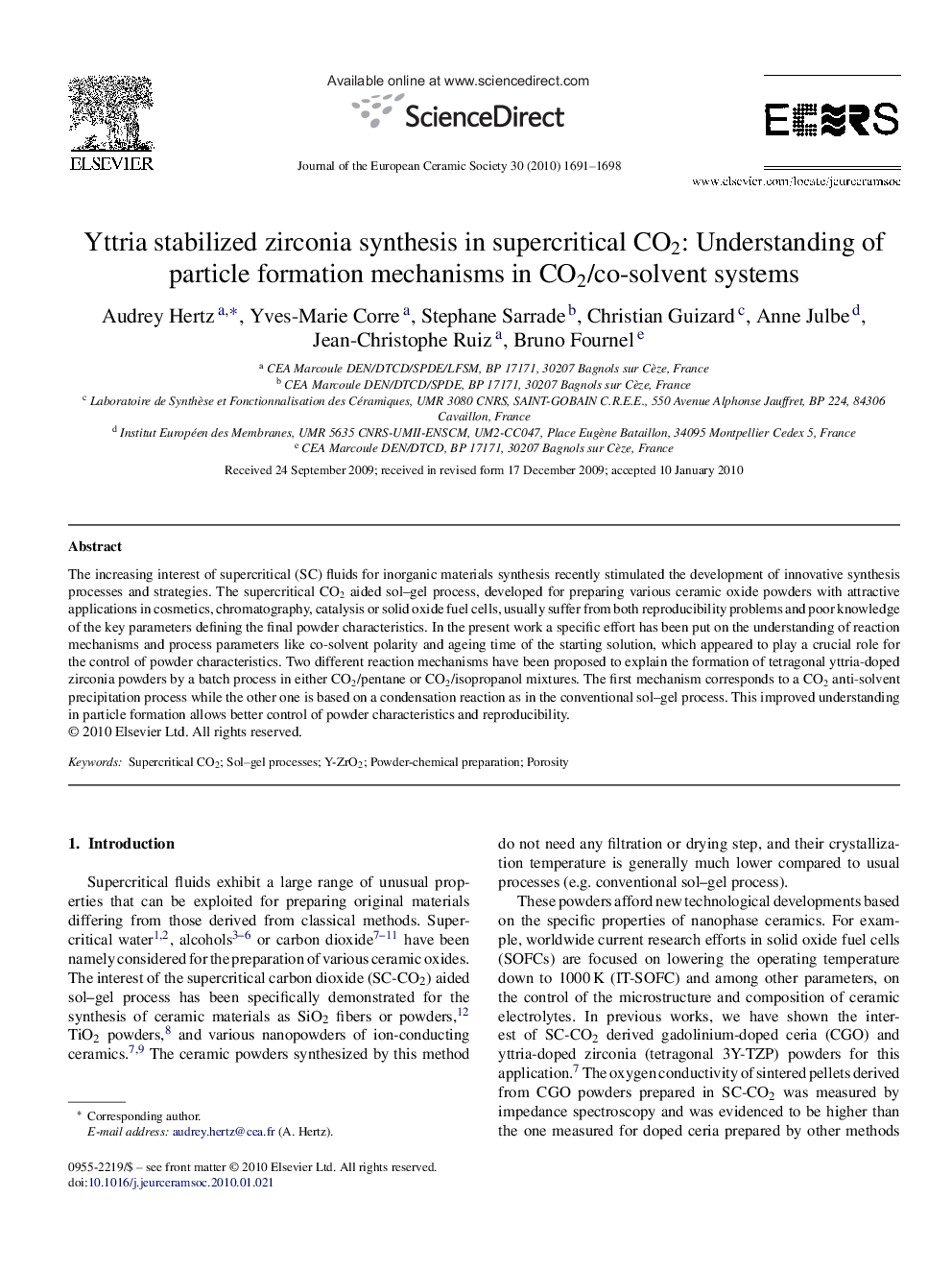| Article ID | Journal | Published Year | Pages | File Type |
|---|---|---|---|---|
| 1475897 | Journal of the European Ceramic Society | 2010 | 8 Pages |
The increasing interest of supercritical (SC) fluids for inorganic materials synthesis recently stimulated the development of innovative synthesis processes and strategies. The supercritical CO2 aided sol–gel process, developed for preparing various ceramic oxide powders with attractive applications in cosmetics, chromatography, catalysis or solid oxide fuel cells, usually suffer from both reproducibility problems and poor knowledge of the key parameters defining the final powder characteristics. In the present work a specific effort has been put on the understanding of reaction mechanisms and process parameters like co-solvent polarity and ageing time of the starting solution, which appeared to play a crucial role for the control of powder characteristics. Two different reaction mechanisms have been proposed to explain the formation of tetragonal yttria-doped zirconia powders by a batch process in either CO2/pentane or CO2/isopropanol mixtures. The first mechanism corresponds to a CO2 anti-solvent precipitation process while the other one is based on a condensation reaction as in the conventional sol–gel process. This improved understanding in particle formation allows better control of powder characteristics and reproducibility.
